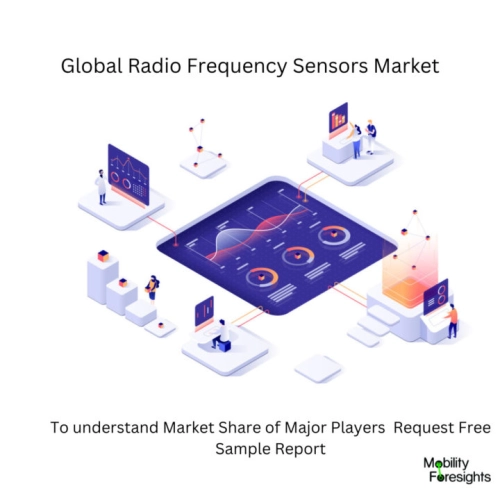
- Get in Touch with Us

Last Updated: Apr 25, 2025 | Study Period:
Devices that display power measurements and are wired to metres are radio frequency sensors. The actual and fictitious components of electrical permittivity and magnetic susceptibility are two of the four parameters they use to measure signals.
These parameters can all be measured by a single sensor or by two sensors working together. Radio frequency (RF) is a unit of measurement used to describe how quickly electromagnetic radio waves oscillate between frequencies as high as 300 gigahertz (GHz) and as low as 9 kilohertz (kHz).
The RF sensor operates by defining a sensitive volume and interrogating the values of these parameters for whatever materials invade this volume.
Any or all of the parameters may be simultaneously measured by either a single sensor or a sensor pair and the sensor deduces the nature and behaviour of the invading items from the resulting signature. The sensitive volume is defined by a radio frequency antenna which is tuned to the sensor electronics.

Global radio frequency sensors market accounted for $XX Billion in 2023 and is anticipated to reach $XX Billion by 2030, registering a CAGR of XX% from 2024 to 2030.
95% of original equipment parts are covered by the universal TPMS sensor LAUNCH RF-Sensor. Since it is a radio frequency sensor, Pilot TPMS may program it to replace the vehicle's original OEM sensor.For the service centres that offer TPMS service, it is a practical and effective option. The Launch RF TPMS sensor makes sensor replacement quick and easy.
It is comparable to QE sensors in terms of performance and endurance. Moreover, It can guarantee your driving safety at all times by accurately and promptly monitoring your tyres' pressure, temperature, and battery health.
The Dedrone RF-160 is a novel radio frequency sensor for the detection of small unmanned aerial systems (sUAS), according to the counter-drone technology developer Dedrone.The new sensor is an improved version of the RF-100 from the business, with a wider detecting field, a quicker installation procedure, and integrated LTE communications.
The RF-160 tracks the number of drones in the airspace and offers early detection of unmanned aircraft within an average range of 1.6 km and up to 5 km for specific drone types. The use of several sensors can increase range, and other detecting technologies, such as radar, PTZ cameras, and other Dedrone counter-UAS systems, can provide more information.
| Sl no | Topic |
| 1 | Market Segmentation |
| 2 | Scope of the report |
| 3 | Abbreviations |
| 4 | Research Methodology |
| 5 | Executive Summary |
| 6 | Introduction |
| 7 | Insights from Industry stakeholders |
| 8 | Cost breakdown of Product by sub-components and average profit margin |
| 9 | Disruptive Innovation in the Industry |
| 10 | Technology Trends in the Industry |
| 11 | Consumer trends in the industry |
| 12 | Recent Production Milestones |
| 13 | Component Manufacturing in the US, EU and China |
| 14 | COVID-19 impact on overall market |
| 15 | COVID-19 impact on Production of components |
| 16 | COVID-19 impact on the point of sale |
| 17 | Market Segmentation, Dynamics and Forecast by Geography, 2024-2030 |
| 18 | Market Segmentation, Dynamics and Forecast by Product Type, 2024-2030 |
| 19 | Market Segmentation, Dynamics and Forecast by Application, 2024-2030 |
| 20 | Market Segmentation, Dynamics and Forecast by End Use, 2024-2030 |
| 21 | Product installation rate by OEM, 2023 |
| 22 | Incline/Decline in Average B-2-B selling price in the past 5 years |
| 23 | Competition from substitute products |
| 24 | Gross margin and average profitability of suppliers |
| 25 | New product development in the past 12 months |
| 26 | M&A in the past 12 months |
| 27 | Growth strategy of leading players |
| 28 | Market share of vendors, 2023 |
| 29 | Company Profiles |
| 30 | Unmet needs and opportunities for new suppliers |
| 31 | Conclusion |
| 32 | Appendix |